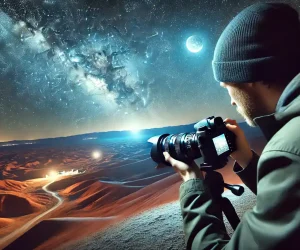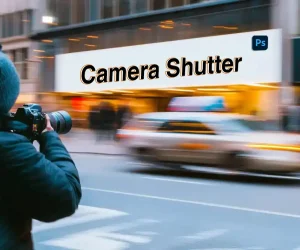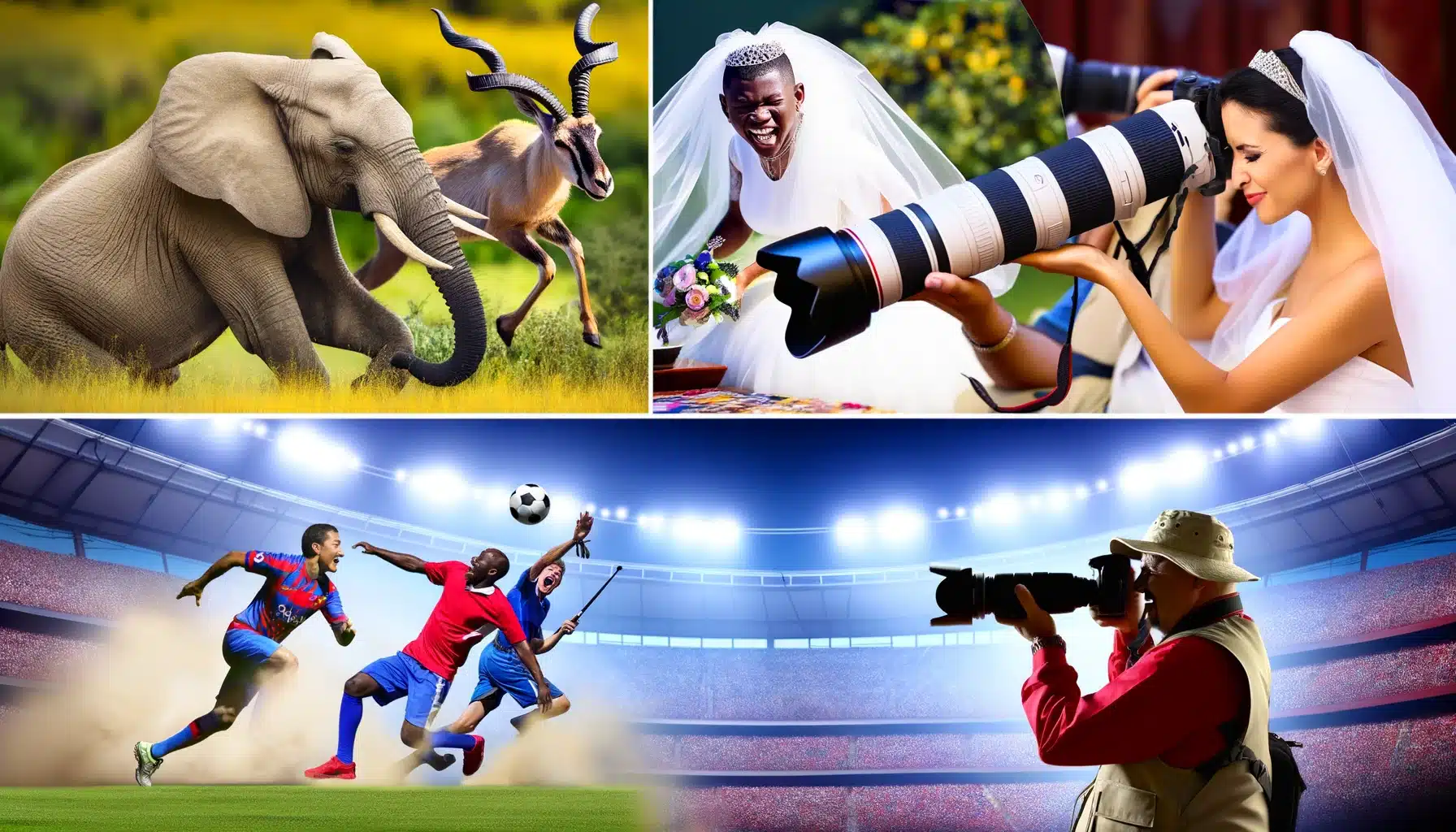
Step into the exciting world of photography, where we explore the many ways people take pictures! That’s right, we’re talking about different types of photography!
The term “Different Types of Photography” does not merely categorize; it celebrates the diversity and creativity within the photography community. Whether you’re a seasoned photographer or someone who’s just starting to explore this captivating art form, understanding the various types of photography is pivotal.
So, grab your camera and get ready to discover all the amazing ways you can capture the world around you!
Table of Contents
Nature Photography: The Most Common Among Different Types of Photography
Nature photography is one of the most talked about genres when discussing different types of photography. It’s a genre that not only demands technical skill and creativity but also a deep appreciation for the environment.
Here, we delve into the different aspects of nature photography, offering insights into its various forms, techniques, and the unique challenges it presents.
Capturing Landscapes: The Art of Seeing the World
Landscape photography is perhaps the most iconic element of nature photography. It involves capturing images of the natural environment in a way that brings viewers into the scene. This requires a keen eye for composition, an understanding of light, and often patience to wait for the perfect moment. Landscapes can be vast and sweeping or focused on smaller, more intimate scenes. The key is to convey the emotion and beauty of the location.
- Choosing the Right Gear: While almost any camera can capture a landscape, certain equipment can enhance your images. A sturdy tripod, wide-angle lens, and filters like polarizers or ND filters can be invaluable.
- Mastering Composition: Learn about the rule of thirds, leading lines, and the importance of foreground interest to create depth in your landscape photos.
- Understanding Light:The golden hours of sunrise and sunset offer soft, warm light that enhances textures and colors. Understanding how to work with or manipulate light is crucial in landscape photography.

Photo edited in Lightroom.
Wildlife Photography: A Test of Patience and Speed
Wildlife photography is all about capturing animals in their natural habitats. It combines the need for quick reflexes and technical prowess to freeze a moment in time, with an understanding of the animal’s behavior to predict and capture compelling scenes.
- Ethical Considerations: Always prioritize the well-being of the wildlife over getting a shot. Disturbing animals or their habitats can have negative consequences.
- Equipment Essentials: A telephoto lens is often necessary to capture detailed shots from a distance, minimizing disturbance to the wildlife.
- Patience Pays Off: Spending time observing and waiting is often required to capture that perfect moment when an animal displays interesting behavior or interactions.
Aerial Photography: A Bird's Eye View of Nature
Aerial photography offers a unique perspective on nature, showcasing landscapes and wildlife from above. With the advent of drones, aerial photography has become more accessible, allowing photographers to capture breathtaking views previously impossible without a helicopter or plane.
- Drone Photography Tips: Understanding drone flight laws, mastering smooth flying techniques, and learning about drone camera settings can help you capture stunning aerial images.
- Safety and Regulations: Always follow local regulations regarding drone flights, especially in nature reserves or national parks to ensure the safety of wildlife and the environment.
The Challenge of Changing Conditions
Nature photography often involves working in unpredictable and changing conditions. Whether it’s weather, lighting, or wildlife behavior, being able to adapt and make quick decisions is part of the thrill and challenge of capturing the natural world.
- Adapting to Weather: Changing weather can offer dramatic opportunities for photography, from storm clouds brewing over a landscape to rainbows appearing after a shower.
- Working with Light: Natural light varies throughout the day and seasons. Learning how to use light effectively—whether it's harsh midday sun or the soft light of dawn—is crucial.
Different Types of Photography: The Art of Portrait Photography
Portrait photography is a genre that focuses on capturing the essence, personality, and mood of an individual or group. This type of photography can range from professional headshots to candid snapshots, each requiring a unique approach to lighting, posing, and interaction with the subject.
Below, we explore the various elements that contribute to the art of portrait photography, offering tips and techniques to enhance your portrait skills.
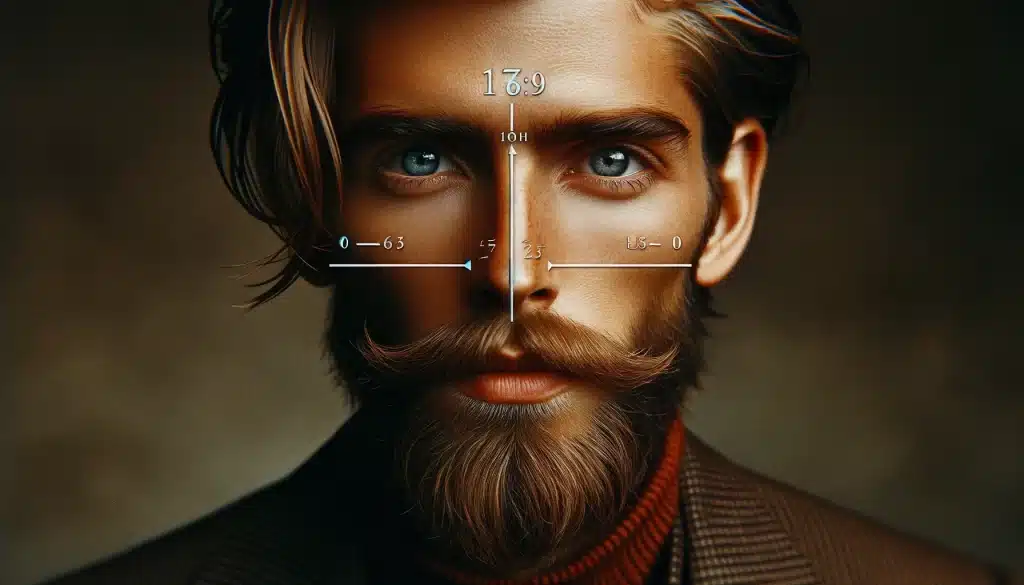
Understanding Lighting: The Key to Mood
Lighting plays a crucial role in portrait photography. It can dramatically affect the mood, tone, and texture of the image. Mastering lighting techniques, whether using natural light or artificial setups, is essential for creating compelling portraits.
- Natural vs. Artificial Light: Natural light can offer a soft and flattering look, while artificial light provides control and consistency. Understanding the advantages of each can help you choose the right lighting for your portrait.
- Lighting Patterns and Techniques: Familiarize yourself with lighting patterns such as Rembrandt, butterfly, and loop lighting. Each pattern offers a different effect on the subject's face and can be used to emphasize certain features or convey a specific mood.
Posing Your Subject: Beyond Just Standing
Posing is more than directing your subject to stand in a certain way. It’s about communication, comfort, and capturing a natural expression that reflects the individual’s personality.
- Guiding Expressions: Engage with your subject to elicit genuine expressions. Whether it's through conversation, humor, or prompts, capturing authentic emotions makes for a more impactful portrait.
- Body Language and Composition: Pay attention to body language and adjust poses to flatter your subject's best features. Consider the composition of your shot and how the subject interacts with their environment.
Choosing the Right Background and Environment
The background of a portrait can add context and depth to the image. Whether shooting in a studio or on location, selecting the right background is key to complementing your subject without distracting from them.
- Simplicity vs. Context: A simple background can focus attention on the subject, while an environmental portrait might use the surroundings to tell a story about the person.
- Using Depth of Field: Utilizing a shallow depth of field can blur the background and ensure your subject remains the focal point of the portrait.
The Importance of Post-Processing in Different Types of Photography

Post-processing is a critical step in portrait photography. It allows photographers to fine-tune images, correct imperfections, and enhance overall aesthetics.
- Skin Retouching: Techniques for gently retouching skin can help smooth out imperfections while preserving natural texture.
- Color Grading and Contrast: Adjusting colors, contrast, and brightness can enhance the mood of the portrait. Be mindful to keep changes subtle and consistent.
Building a Connection: The Photographer-Subject Dynamic
The interaction between photographer and subject is foundational to successful portrait photography. Building a rapport and creating a comfortable atmosphere can lead to more relaxed and authentic portraits.
- Communication is Key: Clearly communicate your vision and provide gentle guidance during the session. This collaboration will help put your subject at ease.
- The Role of Empathy: Understanding and empathizing with your subject can lead to more meaningful and powerful portraits. Take the time to know the person behind the lens.
Portrait photography is one of the different types of photography that combines technical skill with interpersonal interaction. It’s about capturing not just the likeness, but the essence of the subject. By mastering lighting, posing, background selection, and post-processing, photographers can create portraits that not only portray the physical appearance but also hint at the personality and story of the individual.
Different Types of Photography: Diving Into Fashion Photography

If we are talking about different types of photography, this one is a must to include! Fashion photography is a vibrant and dynamic field that combines artistry, style, and marketing. It’s not just about capturing clothing items; it’s about storytelling, conveying emotions, and often, selling a lifestyle. This genre of photography has various facets, each requiring a unique approach, creativity, and technical skill.
Mastering Studio Shoots: The Backbone of Fashion Imagery
Studio shoots are a fundamental aspect of fashion photography. They allow for complete control over lighting, background, and atmosphere, essential for highlighting the fashion pieces.
- Lighting Techniques: Understanding and manipulating light is crucial. Techniques such as butterfly lighting or Rembrandt lighting can add depth and character to the subject.
- Backdrop Selection: The choice of backdrop can dramatically affect the mood of the shoot. Seamless paper backdrops offer versatility, while textured backdrops can add intrigue without detracting from the fashion items.
- Model Direction: Effective communication with models is key to capturing the desired pose and expression that complement the fashion items being showcased.
Embracing Outdoor Fashion Shoots: Utilizing Natural Environments
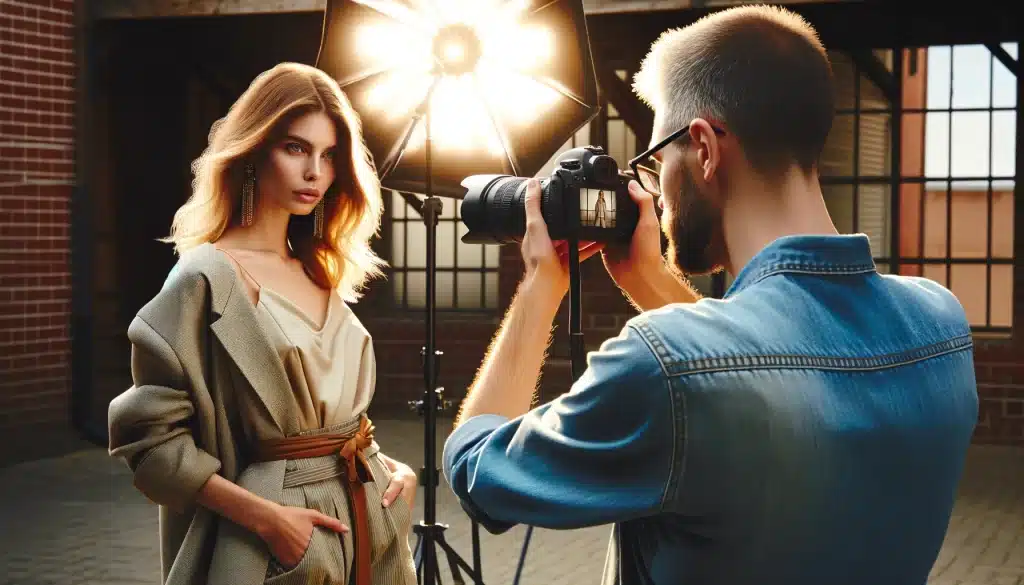
Outdoor shoots offer a different set of challenges and opportunities compared to studio photography. The environment becomes an integral part of the story the images are telling.
- Location Scouting: Finding the right location that matches the theme of the fashion shoot is crucial. It requires researching and visiting sites beforehand.
- Working with Natural Light: Unlike studio shoots, outdoor shoots rely on natural light, which can be unpredictable. Golden hour provides soft, flattering light, but photographers need to be adaptable and ready to use reflectors or diffusers to manage harsh midday sun.
- Environmental Considerations: Weather, bystanders, and changing light conditions require a flexible approach to shooting. Backup plans and quick problem-solving are essential.
The Business of Fashion Photography: Beyond the Camera
Fashion photography isn’t just about taking great photos. It’s also about understanding the industry, building relationships, and marketing your work.
- Networking and Collaboration: Building a network of designers, makeup artists, stylists, and models is crucial for success. Collaborations can lead to exciting projects and opportunities.
- Portfolio Development: A strong, diverse portfolio is essential to attract clients and showcase your style and skills. It should be regularly updated with your best work.
- Marketing Strategies: Utilizing social media, attending industry events, and creating a professional website can help in promoting your work and attracting clients.
Staying Ahead: Trends and Continuous Learning
Fashion and photography are ever-evolving industries. Staying informed about current trends, both in fashion and photography techniques, is vital.
- Continuous Education: Attending workshops, following industry leaders on social media, and practicing new photography techniques can keep your skills sharp and relevant.
- Trend Analysis: Keeping an eye on fashion trends, color palettes, and styling choices can inform your photography and make your work stand out.
Different Types of Photography: The World Through Photojournalism
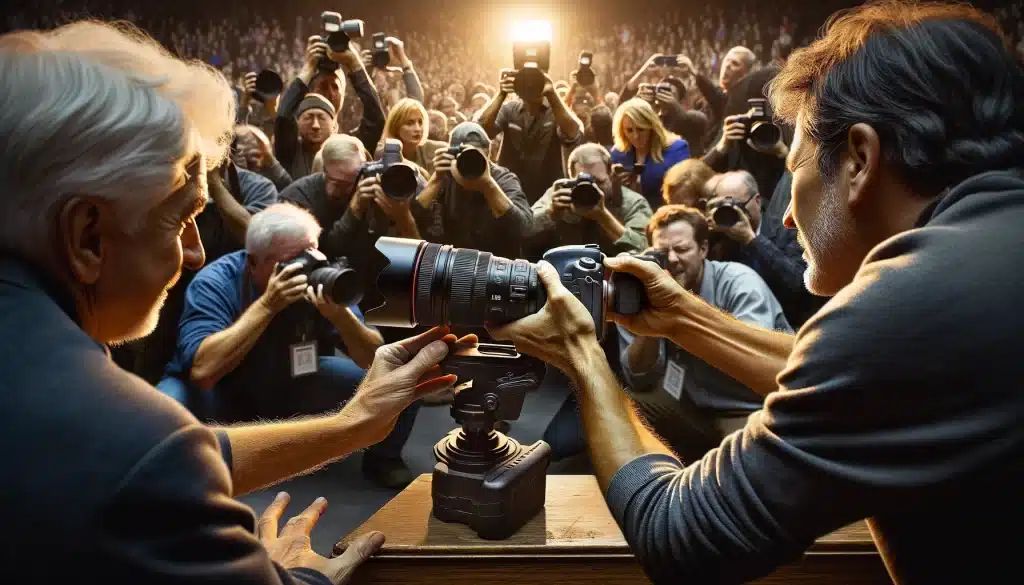
Across all the different types of photography, this one is close to me.
As someone who’s spent a lifetime behind the lens, witnessing the world unfold one frame at a time, I’ve seen photojournalism evolve, yet its essence remains unchanged. It’s been more than just a career; it’s been a journey of capturing moments that, pieced together, narrate the human experience in its rawest form.
If by chance you are not familiar with this term, check out my comprehensive guide on what photojournalism actually is.
The Evolution of Capturing Reality
When I started out, film was the medium, and each photograph was a precious commodity, carefully composed and captured. The darkroom was where the magic happened, bringing to life images that had the power to move hearts and minds.
Today, digital technology has transformed the tools of our trade, but the heart of photojournalism beats the same — it’s about telling stories that matter.
- Why It Matters: In a world inundated with images, the discerning eye of a photojournalist cuts through the noise, selecting moments that offer a glimpse into the joys, sorrows, triumphs, and trials of life. It's not just about being at the right place at the right time; it's about recognizing the significance of a moment and understanding its broader context in the tapestry of history.
The Responsibility of the Lens
With great power comes great responsibility. Each image I capture and share with the world carries a piece of someone’s story, and with it, an obligation to truth and sensitivity.
Consider the impact of images from the Vietnam War or the civil rights movement. These weren’t just news items; they were catalysts for change, compelling society to confront uncomfortable truths and sparking dialogue that led to action.
A Legacy of Visual Storytelling
Looking back on decades of images, I see more than photographs. I see chapters of a larger story, one that I’ve had the privilege of contributing to. The world through photojournalism is a testament to the resilience, beauty, complexity, and sometimes, the cruelty of life. It’s a reminder that our work as photojournalists is far from done.
For those venturing into the field, my advice is simple: stay curious, be compassionate, and always strive to tell the truth.
Capturing Moments with Sports Photography
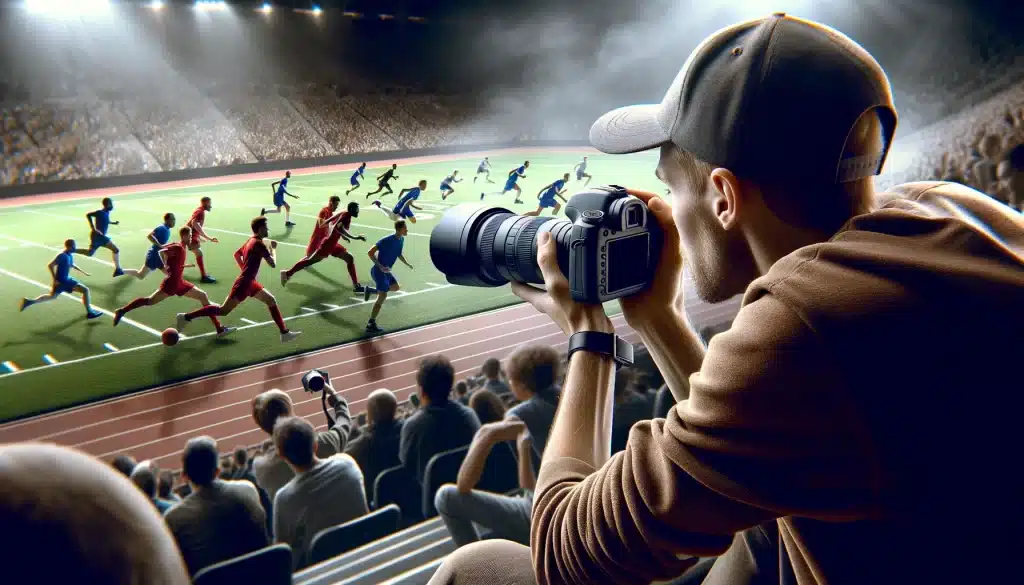
Sports photography is a dynamic and exhilarating field, capturing the pinnacle of human physical achievement and the intense emotions that come with it. It’s about freezing a moment in time, telling a story of triumph, defeat, and everything in between.
Through my lens, I’ve witnessed the raw energy and sheer willpower of athletes, each photo a testament to their dedication and the drama of competition.
Understanding the Game: More Than Just a Sport
Before you can capture the decisive moment, understanding the sport you’re photographing is crucial. Each sport has its rhythm and key moments likely to result in powerful images. From the strategic positioning in football to the anticipatory silence before a sprint starts in track and field, knowing what to expect allows you to be in the right place at the right time.
- Know the Rules: Familiarizing yourself with the game's rules helps anticipate play moves and capture significant moments.
- Study Athletes' Movements: Observing athletes during practice can give insights into their habits and signature moves.
Mastering Equipment: The Right Tools for the Action
Sports photography often requires specific gear to capture fast-moving action up close or from a distance. Choosing the right equipment and knowing how to use it can make all the difference in getting that perfect shot.
- Choosing the Right Lens: Fast telephoto lenses are crucial for bringing distant action close with clarity, while a wider lens can capture the atmosphere of the venue.
- Camera Settings for Sports: Utilizing high shutter speeds to freeze action, adjusting ISO for varying lighting conditions, and employing continuous shooting mode are key settings for sports photography.
Positioning and Timing: Capturing the Peak Action
In sports photography, where a photographer stands and presses the shutter button can be the difference between a good photo and a great one. Positioning yourself strategically and perfecting your timing are skills honed over time and experience.
- Anticipating the Action: Learning to predict where the action will happen is crucial for being ready to capture the peak moment.
- Finding Unique Angles: Moving around the venue to find fresh perspectives can lead to more compelling and visually interesting shots.
Event Photography: More Than Just Weddings
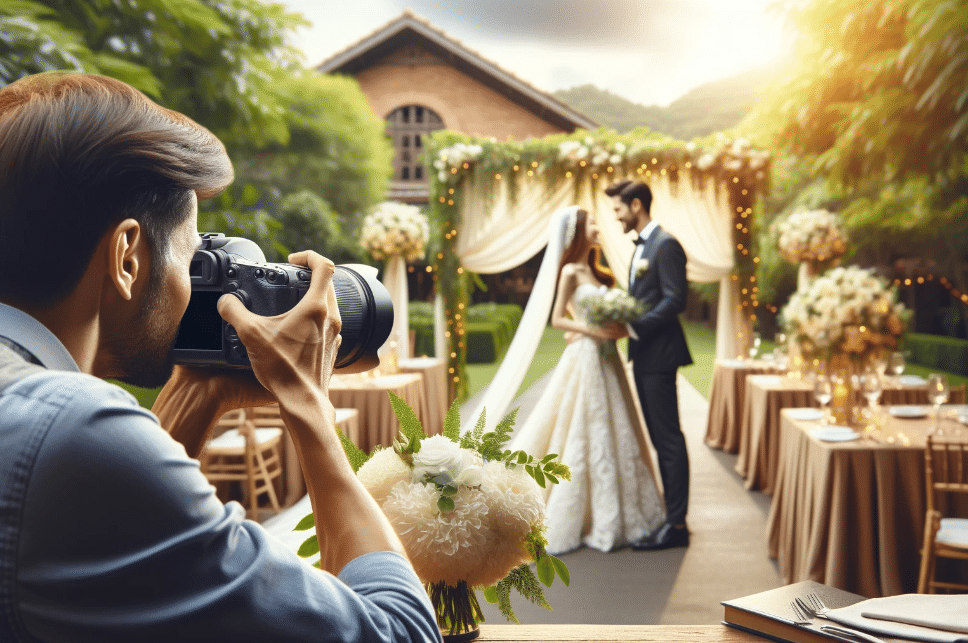
Event photography encompasses much more than capturing the moments of a wedding. It is about documenting the essence and atmosphere of an occasion, whether it’s a corporate gathering, a lavish birthday party, or an intimate family reunion.
As a photographer, your role is to encapsulate the event’s spirit through your lens, telling a story that’s as unique as the people and the celebration itself.
Understanding the Diversity of Events
The type of event greatly influences the approach a photographer will take. Corporate events require a different eye than, say, a lively music festival. The key lies in understanding the event’s purpose and the client’s expectations.
- Corporate Events: Here, photos often serve a promotional or documentary purpose. Capturing keynote speakers, attendees' interactions, and branding elements is crucial.
- Social Gatherings: Weddings, birthdays, or anniversaries are deeply personal. The focus is on candid moments, decorations, and, most importantly, people and their emotions.
- Cultural and Public Events: These could range from music festivals to community parades. The challenge is to convey the event's energy and the crowd's mood.
The Photographer's Toolkit: Gear and Skills
Successful event photography demands versatility, not just in skills but also in equipment. Knowing your gear and being prepared for any situation will ensure you don’t miss a beat.
- Choosing the Right Equipment: A reliable camera with a versatile zoom lens can be invaluable for capturing both wide shots of the venue and intimate moments. Additional flash units and diffusers may also be necessary for indoor or evening events.
- Adaptability and Quick Thinking: Events are dynamic, with moments unfolding quickly. Photographers need to be adaptable, moving seamlessly through crowds and adjusting settings on the fly to capture sharp, well-exposed photos.
Building Rapport with Clients and Guests
- Understanding Client Needs: Clear communication before the event ensures that you understand the client's vision and priorities.
- Engaging with Guests: A friendly demeanor and respectful approach can put guests at ease, making it easier to capture natural, spontaneous photos.
Beyond the Event: Post-Processing and Delivery
The work doesn’t end when the event does. Post-processing is where photos are refined and the story is polished to meet the client’s expectations.
- Efficient Workflow: Managing hundreds, sometimes thousands, of photos requires an organized workflow. Tools like Lightroom and Photoshop are indispensable for editing and enhancing images.
- Delivering Memories: The final delivery of photos, whether through digital galleries, prints, or albums, should reflect the quality and essence of the event. It's the lasting impression you leave with your client.
A Final Look at Different Types of Photography
| Aspect | Nature Photography | Portrait Photography | Fashion Photography | Photojournalism | Sports Photography | Event Photography |
|---|---|---|---|---|---|---|
| Primary Focus | Landscapes, wildlife, natural scenes | Individuals/groups, emotions | Models, fashion items | Real-world events | Dynamic sports action | Weddings, parties, corporate |
| Typical Location | Outdoor environments | Studio/natural settings | Studios, runways | Where news happens | Sports venues | Event venues |
| Lighting | Natural light | Controlled/natural lighting | Controlled, stylized | Available light | Fast shutter speeds | Venue lighting, additional lights |
| Equipment | Range of lenses, tripods | Variety of lenses, lighting | High-end gear, accessories | Versatile, mobile gear | Long lenses, high-speed cameras | Versatile lenses, flash units |
| Skill Set | Patience, natural light knowledge | Personality capture, lighting | Creativity, collaboration | Quick thinking, ethics | Reflexes, sports knowledge | Flexibility, capture atmosphere |
| End Use | Art prints, education | Keepsakes, headshots | Advertising, magazines | News media, documentaries | Media coverage, enjoyment | Memories, promotional content |
Each type of photography demands a unique approach and understanding, reflecting the versatility and depth of the photography profession itself. This is why you should always know the different types of lenses needed. Photographers will adapt their techniques, equipment, and personal style to suit the specific requirements of their chosen field, crafting images that capture the essence of their subjects and convey a compelling story or message to the viewer.
Different Types of Photography: Frequently Asked Questions
What are the 3 main types of photographs?
Three main types of photographs include portrait, landscape, and still life photography. Each category focuses on different subjects: individuals or groups, natural or urban scenery, and inanimate objects, respectively, showcasing a wide range of photography techniques and artistic approaches.
How many styles of photography are there?
There are countless photography styles, each serving a different purpose and audience. From traditional genres like portrait, landscape, and documentary photography to more niche fields such as astro, infrared, and underwater photography, the number can easily exceed 50 distinct styles.
What are the 7 basics of photography?
The seven basics of photography often include exposure, aperture, shutter speed, ISO, composition, lighting, and the use of color. Mastering these fundamentals allows photographers to control the artistic and technical aspects of their images effectively.
What is the most popular photography?
Among the most popular types of photography today, portrait and landscape photography stand out due to their wide appeal and applicability. Street and documentary photography also enjoy significant popularity, capturing candid moments and telling stories through images. Fashion photography remains highly influential, driving trends and showcasing creative visions in the world of apparel and style.
Wrapping Up Different Types of Photography!
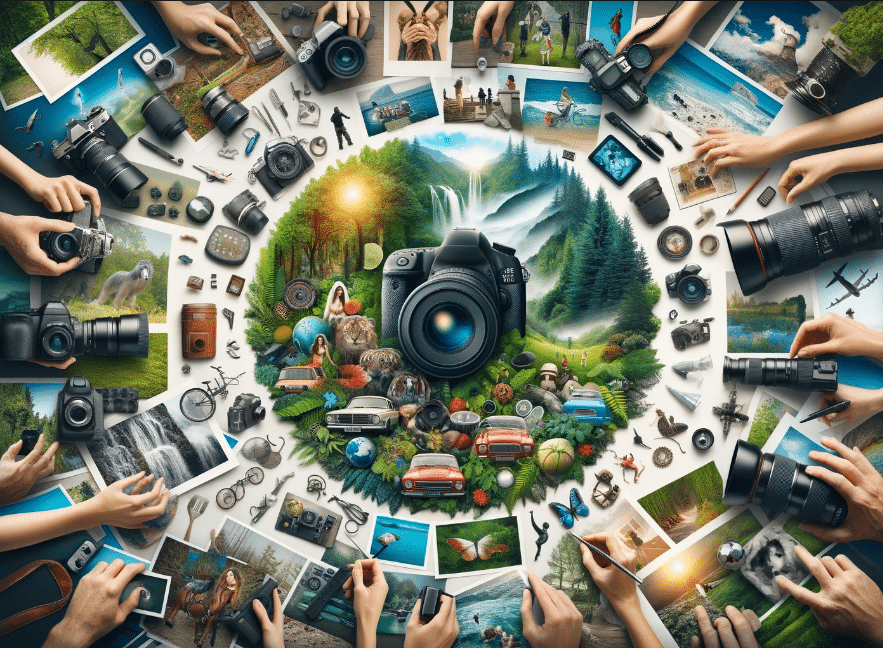
Embarking on the path of photojournalism has been an eye-opening experience, revealing the profound impact of capturing truth through a lens. My personal journey in this field was deeply marked by an assignment that took me into the heart of a community grappling with recovery after a natural disaster. Standing amidst the ruins, camera in hand, I was struck by the resilience of the human spirit. The challenge was not just to document the devastation, but to tell the stories of hope and courage that emerged from it. This moment, and countless others like it, underscored the essential role of photojournalism in bearing witness to the complexities of human experience.
For those inspired to delve deeper into the art and craft of photography, be it photojournalism or any other genre, the journey of learning never ceases. Our meticulously designed Photoshop and Lightroom courses stand ready to guide you through enhancing your skills, whether you’re fine-tuning your technique or exploring new creative horizons. Embrace the opportunity to elevate your storytelling capabilities by visiting our Photoshop Course and Lightroom Course. In the realm of photography, each snapshot is a narrative waiting to be told; let our courses empower you to tell it with clarity, depth, and emotion.
If the “Different Types of Photography ” article has helped you, then Like and Share it with your friends!
Have a nice photoshoot!
Read more about: Photography Techniques




